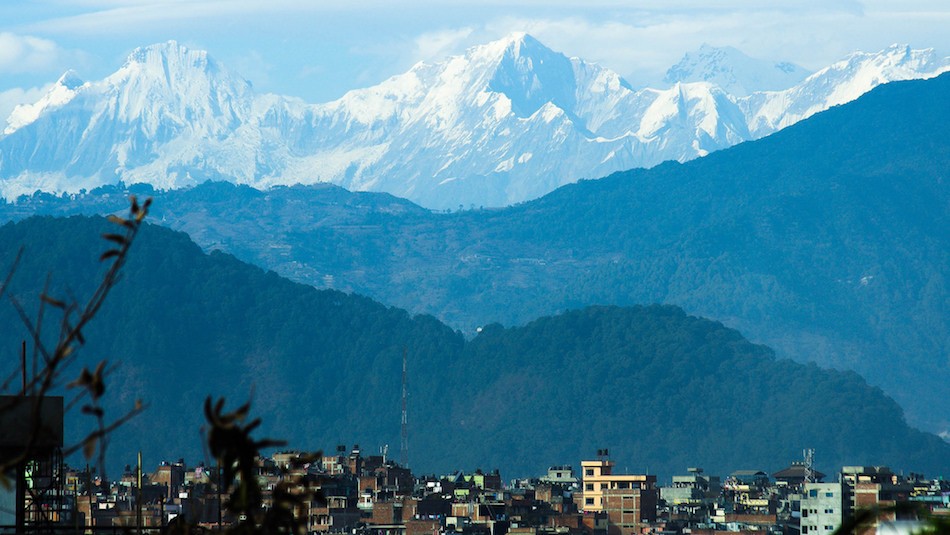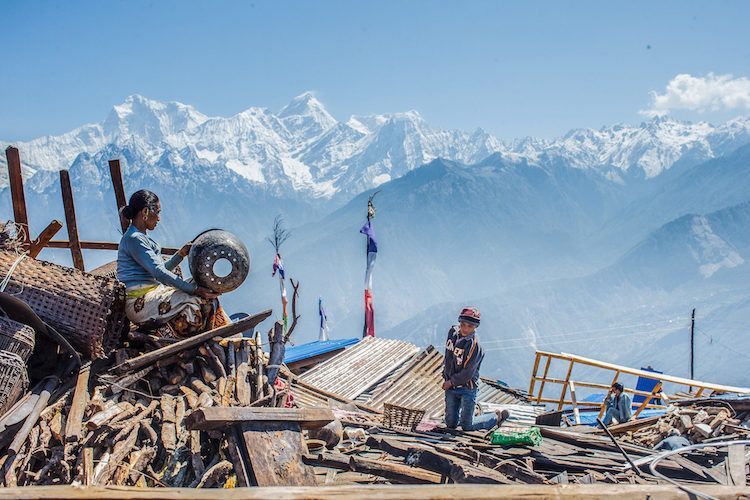
Towns of Nepal stare at the Himalayas. Photo credit: Xiaojun Deng.
Sandwiched between two of the world’s biggest tech ecosystems – China and India – lies a tiny nation of lofty mountains and breathtaking valleys: Nepal, which is best known as the place from where you climb Everest.
The mountain lore that has captured our imagination in books and movies hides a harsh reality on the ground though. Unlike its giant neighbors, Nepal is only now emerging from long years of political instability, economic stagnation, and natural disasters such as last year’s devastating earthquake.
But there’s change in the mountain air – and it comes from the stirrings of tech entrepreneurship.
“Words like entrepreneurship, innovation, and startups were hardly heard in Nepal not too long ago,” says Kavi Raj Joshi, who started an entrepreneur lab in 2011 in his alma mater Kathmandu University. Things have moved along since then. King’s College in Kathmandu started an MBA in entrepreneurship in 2013 and even set up an incubator.
By the following year, there was a shift from kickstarting student entrepreneurship to building startups with global aspirations. “Initially most startups were into ecommerce or attempting to solve local problems. But by 2014, we started seeing innovative startups who wanted to build products and services with global scalability,” says Kavi.
An entrepreneur could build a minimum viable product to test the market in Nepal before launching in India.
Like Backstreet Academy, a peer-to-peer travel platform that connects tourists with local hosts for unique experiences off the beaten track. It started out by helping visitors to Nepal, but now it has scaled across nine other Asian countries.
Its founders Anil and Akash Gurung and Jamon Mok graduated from Singapore Management University and worked in the Lion City before moving to Nepal and becoming entrepreneurs. There’s a growing trend of Nepalis studying and working in Singapore, India, and other places where they can pick up good tech knowhow and returning home to launch startups, says Kavi.
This prompted Kavi and his partner Sambhav Sirohiya to start Next Venture Corp for angel and seed investments a couple of years ago. It now has a co-working space and an accelerator program, and also aims to launch a VC fund soon as high net worth individuals in Nepal as well as non-resident Nepalis abroad get interested in backing Nepali startups.
Advantages of having nothing to lose

Photo credit: Asian Development Bank.
International players too are checking out the Kathmandu startup scene – once they’re able to tear their eyes away from the surrounding Himalayan mountains. This Sunday, a Next Growth Conclave event has investors coming in from India, Hong Kong, and Thailand.
One of them is Joseph Jeong, a Wall Street veteran, founder of investment consultancy firm Oracle Strategies in Hong Kong, and fintech mentor for Chinaccelerator.
I started with nothing and went to places I shouldn’t have gone.
He sees a parallel between the emerging startup scene in Nepal and his own experience as a migrant to the US at the age of eight, where he “started with nothing.” He began to work when he was nine, taught himself the art of investing, and joined a brokerage firm when he was 17. He went on to a graduate program at UCLA and a successful investment banking career. He then founded a brokerage firm which got bought by India’s Religare Enterprises. “I started with nothing and went to places I shouldn’t have gone,” he tells me with a laugh.
He finds a similar passion and urge to succeed taking hold in Nepal, thanks to tech and a few good role models and backers. “I really believe going in at the bottom with nothing to lose has actual advantages,” adds Joseph.
Amarit Charoenphan, CEO and co-founder of Thai co-working space Hubba, shares a similar view. “I have heard about the Nepali startup scene from my meetings with community leaders and startup founders that have visited Hubba in Bangkok. Despite going through a lot of difficult challenges, I can sense a strong urge of my Nepali friends to succeed in building their startup community,” he tells Tech in Asia. He wants to help the Nepali startup ecosystem build bridges with the regional Asian startup community.
Joseph has an altruistic motivation as well. He feels any mentorship or investment he brings to Nepal would have so much more impact than in mature ecosystems like Shanghai or Silicon Valley. “If I inspire a few good entrepreneurs, that could make such a difference in a country that’s at the bottom of the pyramid,” he says.
It could make business sense too. Kavi points out that even a US$20,000 investment could kickstart something with potential in Nepal, where valuations and cost of tech talent are much lower than in more mature ecosystems where such a small ticket size may not make sense.
New connections with India

Trippy in Nepal. Photo credit: Mike Melrose.
The first international investments in the Nepali startup space mostly focused on social entrepreneurship. Dutch impact fund Rockstart and the UK’s Dolma Impact were among the pioneers. But over the past year or two, there’s increasing interest in innovative startups that could give good returns, says Kavi.
If I inspire a few good entrepreneurs, that could make such a difference in a country that’s at the bottom of the pyramid.
Alternative investments firms like iCapital and Business Oxygen, whose fund targets frontier markets, have become active. So have angel investor networks from abroad, such as VA Angels from Canada.
Kavi is now hoping for a lot more engagement from neighboring India whose citizens don’t need a visa to travel to Nepal. He points out that Nepal has a similar demography to that of India. So an entrepreneur could build a minimum viable product to test the market in Nepal before launching in India where the tech startup scene has become a lot more competitive. “Nepal can be a gateway to India,” he says.
The two countries could do with a new gateway.
Earlier this year, the Terai region of Nepal faced a de facto economic blockage as protestors of the Nepal’s Madhesi ethnic group blocked bridges connecting India. The Madhesis, who have ethnic ties with India, were protesting perceived disenfranchisement in Nepal’s new constitution. It got resolved only after months of an impasse that led to shortages of fuel and other supplies in Nepal. It also led to the resignation of Nepal’s prime minister Khadga Prasad Sharma Oli, who was criticized for his handling of the situation.
His replacement Pushpa Kamal Dahal, known as ‘Prachanda’ which means ‘towering’, now finds himself catching flak from Chinese media for his visit to India and bonhomie with Indian prime minister Narendra Modi. Both China and India have historically tried to exert influence over Nepal, which sits between the giants.
Perhaps the rise of tech entrepreneurship in Nepal will also build new bridges across all three nations and put the interests of business and development above geopolitical moves and countermoves.
See: In India, startups face up to the end of the feast
This post In the shadow of Everest, a Startup Valley begins to emerge appeared first on Tech in Asia.
from Tech in Asia https://www.techinasia.com/in-the-shadow-of-everest-a-startup-valley-begins-to-emerge
via IFTTT
No comments:
Post a Comment